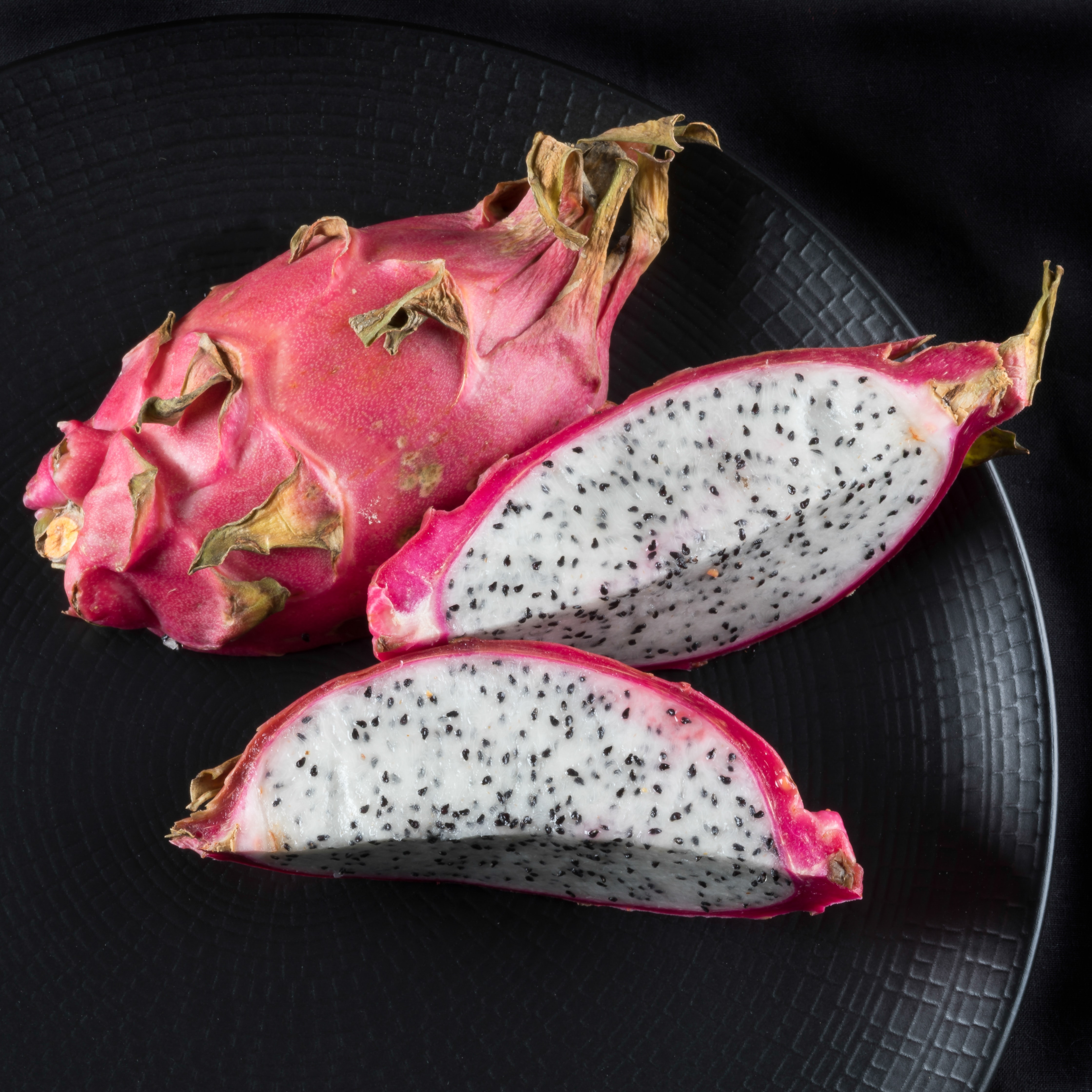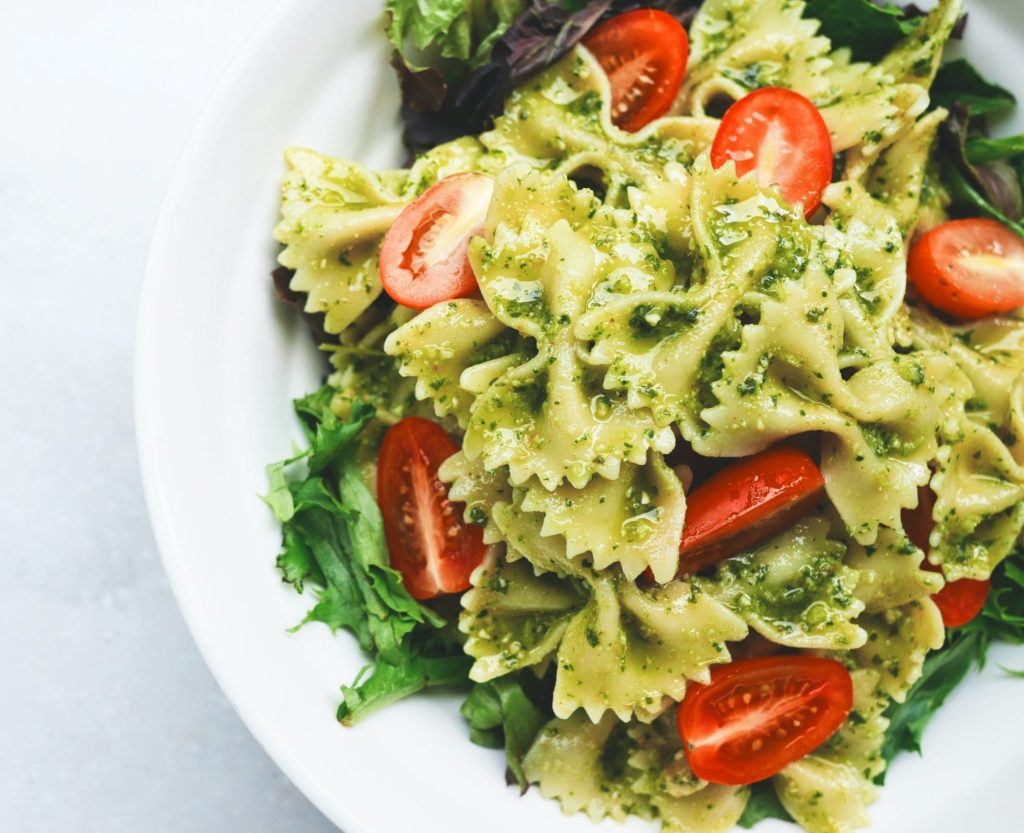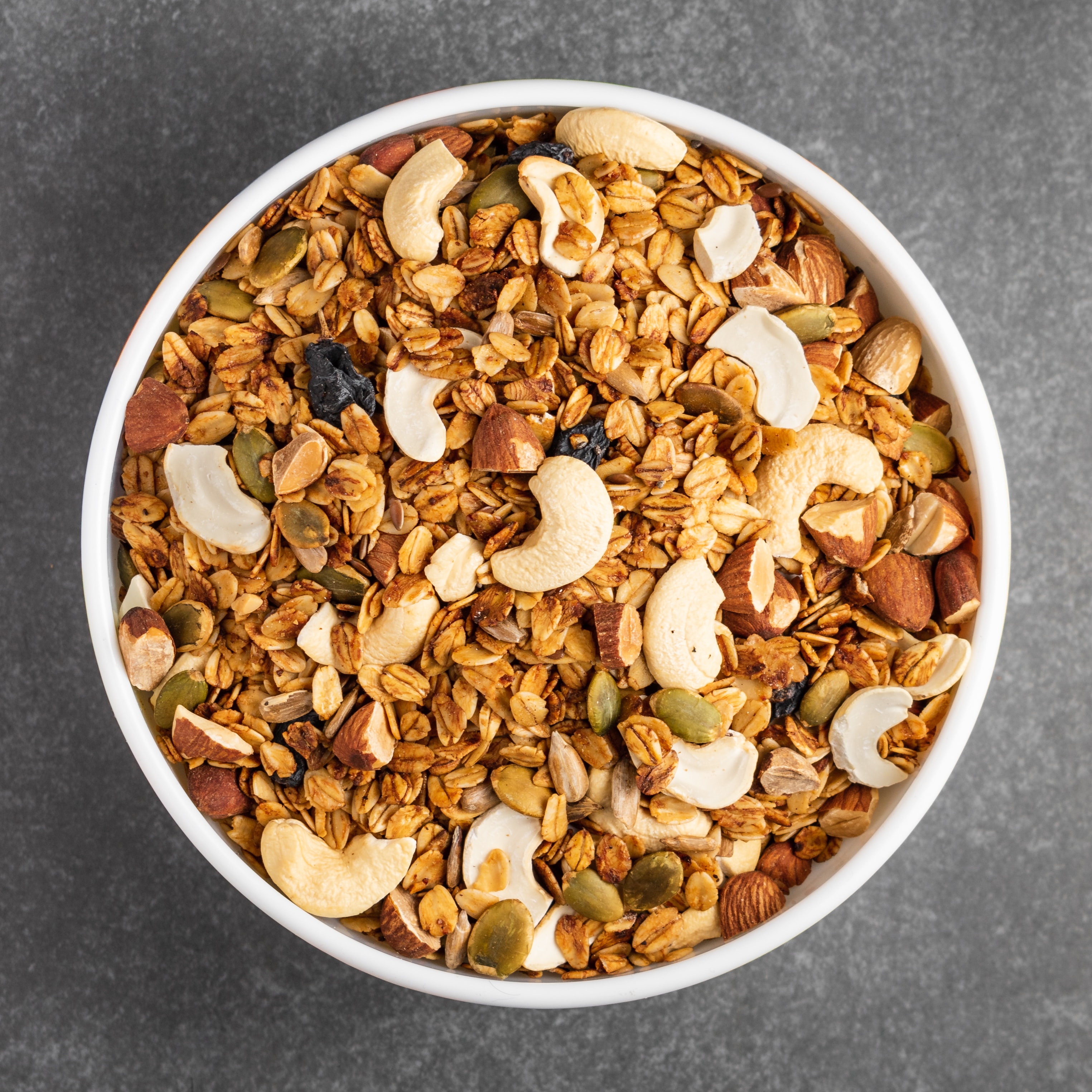Post 003 explained how eating sufficient amounts of protein at breakfast, lunch, and dinner helps your body produce a sustained level of energy throughout the day.
It also explained how your body burns glucose, a particular form of sugar, to produce the energy it uses to fuel all muscle contraction, including that which drives exercise.
Ultimately, the source of the glucose the body uses to fuel muscle contraction is carbohydrate.
Carbohydrate could thus be correctly thought of as the raw material the body uses to make the glucose it needs to fuel muscle contraction.
But since your body cannot make carbohydrate, its only source of carbohydrate is food you have swallowed.
That said, there are many forms of carbohydrate that can be swallowed.
As it turns out, some forms of carbohydrate are far more efficient than others in helping your body sustain energy production for extended periods, such as periods long enough to support exercise. In other words, carbohydrates vary widely in their ability to help the body sustain energy levels over time.
For example, as explained in post 003, when eaten in significant quantities, ordinary table sugar is digested so rapidly by the body that it produces a short-lived surge in energy that lasts only a few minutes.

In fact, the rate at which significant quantities of table sugar are digested is so rapid that the blood sugar is quickly driven to levels far in excess of what’s required for the body’s immediate use.
To prevent the energy from this excess blood sugar from being wasted by being cast off in the urine, the pancreas responds by releasing insulin, which withdraws from the bloodstream any sugar not required for immediate use by the body, and stores it as fat.
This allows the energy contained in this excess sugar to be stored rather than being wasted, a trick our bodies perfected during our extensive hunting-and-gathering period that accounts for most of human history.
At the opposite end of the spectrum from ordinary table sugar are forms of carbohydrate digested so slowly that the body is able to sustain optimal energy levels for hours.
Eating these more beneficial carbohydrates provides the body with the sustained energy level it needs to support exercise over extended periods, such as during, say, an all-day, long-distance cycling trip of dozens of miles.

It is in fact the slow rate of digestion of these more efficient forms of carbohydrate that allows the energy released from them to trickle into the bloodstream instead of pouring in all at once, as in the case of ordinary table sugar.
This stabilizes the body’s energy level over extended periods, and prevents release of insulin by the pancreas in quantities large enough to cause the energy produced by digestion of these more beneficial forms of carbohydrate to be stored as fat.
Ultimately, it’s the complex chemical structure of these more beneficial forms of carbohydrate that causes them to be digested so slowly.
In fact, the more complex the chemical structure of the carbohydrate eaten, the more time and energy the body requires to digest it.
Because these more beneficial forms of carbohydrate have complex chemical structures, they are typically referred to as complex carbohydrates.
Now, as pointed out in post 003, compared to proteins, which are expensive and scarce, carbohydrate foods are abundant and cheap.
This allows restaurants to maximize profit by including large amounts of carbohydrate foods in their menus, while minimizing inclusion of protein foods. The next time you eat out – particularly if you eat at an all-you-can-eat buffet – notice how few protein foods are presented, and how many carbohydrates and other non-protein foods are on offer
Given how cheap and abundant carbohydrate foods are, obtaining carbohydrate in abundance is not a problem.
Instead, the major concern of anyone interested in exercise and building health is the quality of carbohydrate eaten. In this context, carbohydrate quality refers to the degree to which the energy our bodies receive from digesting carbohydrate foods is sustained over time.

The best way to think about how carbohydrate quality varies across carbohydrate foods is to mentally place these foods on a continuum represented by a horizontal line.
On this continuum, the simplest forms of carbohydrate – those digested most rapidly – appear on the left end, and the most complex forms of carbohydrate – those digested the most slowly – appear on the right end of the continuum.
This continuum allows us to rank the various types of carbohydrate foods according to how efficient they are in sustaining energy levels over periods long enough to support exercise.
On the extreme left end of our continuum are the forms of carbohydrate least supportive of exercise, since they’re digested the most quickly. And those at the extreme right end of our continuum are those most supportive of exercise, since they’re digested the most slowly, which allows the energy from their digestion to trickle into the bloodstream rather than pouring in all at once.
The foods that appear on the extreme left end of our continuum are the carbohydrate foods with the simplest chemical structures – i.e., those digested so quickly that their contribution to sustained energy production is essentially nil. These are often referred to as simple carbohydrates.
Concentrated Sweeteners
This extreme left end of our continuum includes table sugar (i.e., sucrose), corn syrup, and all forms of so-called “natural sweeteners” such as maple syrup, all types of honey, granulated sugar made from dates, blue agave syrup, and all similar types of concentrated sweeteners. It also notably includes “brown sugar” and “raw sugar”, which are made by first producing white table sugar, and then adding a bit of molasses.

Finally, included with these concentrated sweeteners at the left-hand end of our continuum is blackstrap molasses, which despite the rapid rate at which it’s digested by the body, does contains significant amounts of vitamins and minerals.
In fact, blackstrap molasses is vitamin- and mineral-rich because it contains all of the nutrients left behind when sugarcane juice is processed into white table sugar. The latter – being devoid of any nutrients – contains nothing but calories.
As a result, blackstrap molasses is nutrient-dense enough to make a significant contribution to health when used in small quantities, such as in sweetening and flavoring baked goods.
That said, as with other concentrated sweeteners, when taken in significant quantities in isolation of other foods – for example, when eaten directly by the tablespoonful – blackstrap molasses is digested by the body so rapidly that it likewise causes the pancreas to release insulin into the bloodstream, which results in most of the energy from its digestion being stored as fat.
Fruit Juices
Digested only slightly less quickly than concentrated sweeteners are fruit juices, which lie just to the right of concentrated sweeteners on our continuum. When taken alone, fruit juices are typically metabolized by the body within about 30 minutes. As a result, they don’t support exercise very well, due to the short-lived energy lift they provide.
However, on the plus side, fruit juices contain significant amounts of vitamins and minerals that concentrated sweeteners other than blackstrap molasses don’t. This means that overall, fruit juices are more supportive of health than are concentrated sweeteners, particularly when taken with foods that slow digestion.
Whole Fruits
Moving along our continuum to the right, the next category of carbohydrate foods we encounter is whole fruits. In addition to the vitamins and minerals contained in fruit juices, whole fruits also contain fiber, which helps slows digestion. This causes whole fruits to be digested a bit more slowly than fruit juices.

Grains Ground Into Flour, and Foods Made Primarily of Flour
The next category of carbohydrate foods we encounter as we move to the right on our continuum past whole fruits are grains of all types that have been ground into flour. This also includes all foods made from grains ground into flour.
This category of carbohydrate includes wheat flour, as well as all other foods made primarily of flour such as breads and pastas. It also includes flour made from grains other than wheat, such as barley, oats, and rye, although these are in far less common use than is wheat flour.
These foods are digested far more slowly than are whole fruits, which allows the energy released from them to be sustained for periods long enough to support exercise.
Now, at this point, it is important to note that there are two widely differing procedures for making flour by grinding grain.
Unsurprisingly, these two different procedures for producing flour cause an equally wide divergence in the ability of foods made from them to sustain energy levels over extended periods.
The first of these two procedures is commercial milling of grain, a process that depletes flour of nutrients, and produces a final product that does little to sustain energy levels over extended periods.
The second procedure produces an end-product highly supportive of sustaining energy levels over time. In this second procedure, the grain from which the flour is sourced remains intact. That is, the “germ” of the grain is present when the grain is ground into flour.
The germ of any grain (e.g., wheat, barley, oats, rye) is the life-force of the grain. It contains the DNA – that should the grain be planted – would determine the physical structure of the resulting plant.
All parts of the grain other than the germ exist solely to provide the energy a nascent plant needs once sprouted to support its growth until it is large enough – and its roots are long enough – to obtain the nutrients it needs for continued growth from the soil in which it is planted.
Let us now examine in more detail the first procedure for producing flour referred to above – i.e., commercial milling of grain. This is the process that produces an end-product that does little to sustain energy levels for periods long enough to support exercise.
Commercial food processors are well aware that by removing the germ – the life-force of the grain – before grinding it into flour, that the resulting product spoils less quickly than does flour milled from grain with the germ intact.
This is because removing the germ – the most nutrient-dense part of the grain – helps prevent the end-product from supporting the growth of bacteria, which is the source of product spoilage.
From the perspective of commercial food processors, the greater the number of nutrients removed during the milling of flour, the better, since this slows spoilage, thereby lengthening product shelf life and increasing profitability.
However, from the point of view of food consumers, this process unfortunately removes the very nutrients that would allow the body to sustain energy levels over periods sufficient to support exercise, and to build health generally.
Following removal of the germ – the nutrient-dense portion of the grain – commercial food processors then mill the remainder of the grain using mechanized equipment operating at such high speeds that it actually cooks the flour.
Next, the resulting product is bleached until it is white in color. This removes nearly all remaining nutrients in the flour, further prolonging shelf life and increasing profitability.
The end-product of this process is referred to as “refined flour”.
This “refined flour” is so nutritionally depleted that the Food and Drug Administration – whose edicts have the force of law – requires food processors to then “enrich” the resulting nutrient-depleted flour with tiny amounts of just five nutrients. These include vitamin B1, vitamin B2, vitamin B3, folic acid [also a B vitamin], and iron, all of which are easily and cheaply synthesized.
These synthesized nutrients are then added to the “refined” flour in amounts so small that they are unlikely to hasten product spoilage.
The end-product of this entire process is referred to as “enriched flour”, which is the white flour universally found on supermarket shelves.

In my view, referring to this end-product as “enriched flour” is somewhat of a misnomer, since it has now been proven that whole wheat grains with the germ intact contain at least 17 B vitamins, as well as numerous minerals in addition to iron.
I am not alone in this view, as this nutritional sleight-of-hand on the part of commercial food processors has not gone unnoticed by nutritionists generally.
In fact, one now-famous nutritionist once remarked that you’d be enriched by eating foods made from “enriched” flour in the same manner that you’d be “enriched” if a mugger robbed you of all your money at gunpoint, and then accidentally dropped a few small coins which you were able to retrieve during his hasty getaway
Now, the point here is not to rail against food processors. Their behavior simply reflects the fact that there is demand for the products they produce.
Similarly, we as food consumers can choose to buy their products.
Or, we can choose to buy flour milled from whole grain with the germ and all nutrients intact, and eat foods made from this nutritionally superior flour that sustain energy levels over periods long enough to support exercise.
Now, foods made of flour ground from grains with the germ intact (i.e., foods made from “whole-grain flour”) are digested far more slowly – and are far more nutrient-dense – than are foods made from so-called “enriched flour”.
These nutrient-dense types of flour are produced by means of a simple grinding process called “stone grinding”.
This name is a reference to an early means of grinding grain into flour used for centuries, and which even today remains in use in lower-income developing countries.
In this low-tech procedure for producing flour, grain is ground between a circular revolving stone rotated manually on a horizontal plane, and a stationary stone below it of similar size and shape.
An even less technologically-advanced version of stone-grinding has been in use for thousands of years by the descendants of the indigenous population “discovered” by the early Spanish conquistadors.
In this version of stone-grinding, the operator uses a small hand-held stone similar in size and shape to a narrow, miniature rolling pin, to repeatedly crush and grind grains by hand against a much larger, flat, stationary stone.

Today, modern stone grinding is slightly more mechanized than in its two earlier versions referred to above.
However, as in its two more primitive counterpart versions, the grinding surfaces in modern mechanized stone grinding move slowly enough that the heat generated is insufficient to harm any of the B vitamins – all of which are unstable to heat — or other nutrients present in unground grain.
Thus, flour produced by stone grinding retains all of the nutrients present in the unground grain.
Finally, stone-grinding leaves intact all of the fiber present in unground grain. Since fiber slows digestion, foods made from stone-ground flour digest far more slowly than those made of “enriched” flour.
In sum, foods made from stone-ground, whole-grain flour provide a far more sustained energy lift than do foods made from so-called “enriched” flour.
In addition, the greater nutrient-density of foods made from stone-ground, whole-grain flour support long-term overall health and wellness far more efficiently than do foods made of highly processed, nutrient-depleted “enriched” flour.
Whole Grains and Legumes
As we move further to the right on our continuum, the next category of carbohydrate foods we encounter are whole grains, i.e., grains that have only been processed by having their outer husk removed, and legumes – a fancy word referring to beans of all types. Whole grains include brown rice, wheat berries in their unprocessed state, whole oats including rolled oats cooked as oatmeal, and all other whole grains such as barley, buckwheat, and rye.

There are actually many more such whole grains that human populations consume throughout the world, though many of these are likely to be less familiar to readers than those referred to above.
Notable examples of less-familiar whole grains include triticale, a hybrid grain produced by crossing wheat and rye, and quinoa, a gluten-free, whole-grain carbohydrate containing protein of superior quality.
Perhaps the least familiar whole grain is amaranth.
An ancient grain similar to quinoa, amaranth is the staple carbohydrate food eaten for centuries by the indigenous peoples of the high-altitude Andes mountains in Argentina, Bolivia, and Peru, no doubt because it grows well in cold climates,
For readers who wish to experiment with this ancient grain, amaranth is a “pseudo-cereal” – actually a small, light tan colored seed that is often cooked in a way similar to rice and oats, and is eaten as a pilaf or porridge. When ground into flour, amaranth is typically used in baking, particularly in gluten-free recipes.
Interestingly, when beans (i.e., legumes) are served at the same meal as whole grains, the combination of these two nutrient-dense foods produces a complete protein – i.e., a form of protein supportive of both exercise and long-term health generally.
When eaten alone, both beans and whole grains lack some of the building blocks of protein required for them to qualify as a high-quality protein.
However, the building blocks of protein lacking in beans are precisely those present in whole grains in abundance. And the building blocks of protein lacking in whole grains are precisely those present in beans in abundance.
As a result, when eaten at the same meal – ideally in a ratio of about 3 parts whole grains to 1 part beans, the combination of these two nutrient-dense foods delivers a high-quality protein.
In fact, the protein this combination of grains and beans delivers is of such high-quality that it has been the primary protein source used for thousands of years in numerous widely-divergent countries and cultures.
Examples include tortillas (made from corn or wheat) eaten together with beans in both pre- and post-Western contact Mexico, chapatis and naan (two types of bread made from wheat) and dahl (lentils) eaten in northern India, rice and dahl eaten in southern India, rice and tofu (soybean curd) eaten in southern China, and noodles made of wheat and tofu eaten in northern China.

Finally, all whole grains and beans contain substantial amounts of fiber, which as explained above, slows the rate at which the body digests food. This allows the glucose formed from digestion of these nutrient-dense foods to trickle into the bloodstream, thus sustaining optimal levels of energy for relatively long periods.
Root Vegetables
At the extreme right-hand end of our continuum are the most complex carbohydrates, which are those that allow energy levels to be sustained for the longest periods.
These are the root vegetables, a category of carbohydrate foods that includes all vegetables that grow below ground.
These foods include all varieties of potatoes, as well as sweet potatoes and yams.
Notably, these latter two root vegetables are nearly always confused with one another. Most supermarkets amplify this confusion by invariably labelling yams as “sweet potatoes”.
All yams, the most common varieties of which sold in supermarkets include Jewel, Garnet, and Beauregard, are golden in color when cooked, and have a light, creamy texture. Even when raw, these most common varieties of yams have interiors of varying shades of orange.
In contrast, true sweet potatoes have an interior that is creamy white in color. When cooked, sweet potatoes – which have double the caloric density and energy-sustaining power of yams – resemble baked potatoes with their”jackets” intact. When properly prepared, cooked sweet potatoes are so sweet and delicious that they can be eaten alone without any seasoning, whether served hot or cold.

Eating cooked sweet potatoes cold with their “jackets” intact is an efficient – and delicious – way to sustain energy for many hours at a time when, say, you’re on an all-day, long-distance hike.
For readers interested in experimenting with the energy-sustaining quality of yams and sweet potatoes, the most efficient way to prepare both is to first wash them to remove any remaining dirt, then cut them into large chunks, and finally, cook them in a pressure cooker, which requires only 15-20 minutes to cook these delicious vegetables all the way through.
Cooking yams and sweet potatoes in a pressure cooker also seals in most of their moisture and nutrients, the greater part of which tend to be lost, or at the minimum, diminished, when these delicious foods are baked for an hour or more in a traditional oven or microwave. Finally, since flavor parallels nutrient-density, pressure-cooked yams and sweet potatoes tend to be far more delicious than their oven- or microwave-baked counterparts.

The widespread confusion between yams and sweet potatoes aside, the important point to remember is that when eaten, root vegetables give you the most sustained pickup in energy of all the various types of carbohydrate.
Nutritional Role of Dietary Fiber
Now, in addition to the above, there is one final way that you can help your body boost energy production. This is by increasing the amount of fiber in your diet.
In addition to slowing digestion, which lengthens the amount of time energy levels are sustained, fiber has an additional function in human health. That is to increase the efficiency with which nutrients from any food eaten pass from the interior of the intestines into the bloodstream.
In fact, the interior of the small intestine is not smooth like the inside of a garden hose. Instead, it is filled with many folds called villi.
The purpose of these folds is to greatly increase the surface area of the intestinal wall. This increases the efficiency with which the nutrients from any food eaten pass from the interior of the intestines into the bloodstream.
When insufficient fiber is eaten – particularly over extended periods – digested food matter lodges in these folds in the interior of the intestines (villi), ultimately clogging them.
Clogging of the villi greatly reduces the surface area of the interior of the intestines. This limits the ability of nutrients from all foods eaten to pass from the intestines into the bloodstream.
Put differently, clogging of the villi reduces the amount of nutrients the body ultimately receives from any food eaten, since fewer nutrients are able to pass from the intestines into the bloodstream.
This problem is easily resolved – or better yet, avoided – by adding 10 grams (about a heaping teaspoonful) of a fiber supplement such as psyllium husk powder to any liquid food, e.g., a breakfast protein drink.
While psyllium husk powder passes through the body completely unchanged, it literally sweeps the interior of the intestines like a broom, dislodging impacted food matter from the villi. This increases the surface area of the interior of the intestines, which allows more nutrients from all foods eaten to pass into the bloodstream.
Should you choose to experiment with this means of improving nutrition independently of altering your diet, note that psyllium husk powder avidly absorbs liquid and swells to 10 times its dry volume within a matter of minutes. A protein shake to which psyllium husk powder is added should thus be drunk quickly once prepared.
In addition to improving nutrition independently of altering your diet, psyllium husk powder sates hunger and slows digestion, which like all foods containing fiber, allows the sugar energy from food eaten to trickle slowly into the bloodstream. It likewise improves elimination and shortens retention time, which is the amount of time food is retained within the digestive system.
Of the two types of psyllium available for this purpose, psyllium husk powder is preferred to the light, fluffy, less-dense “blonde” psyllium husk, which many people find less palatable and messier to use than psyllium husk powder, though both are freely available from online sources.
Till next time,
Jock Scarsborough
Photo Credits:
I wish to express my sincere thanks to all of the dedicated photographers who have made their work freely available to yourhealthblog.org for unlimited personal and commercial use without permission being required, and without any restrictions whatsoever with regard to use or modification.
The photos in the blog post above appear under the terms of the Creative Commons Attribution 2.0 Generic license, which may be viewed at https://creativecommons.org/licenses/by/2.0/
To express my gratitude to the photographers, I have included in the table below the attributions for the photographs in order of their appearance in the blog post. These attributions are as follows:
| No. | Title | Subject | Photographer | Download | Source |
| 1 | Table Sugar Crystals | Unidentified | Alexander Grey | 13 Nov 22 | alexander-grey-oKay0q7Pa30-unsplash |
| 2 | Long-Distance Cycling | Unidentified | Dmitrii Vaccinium | 14 Nov 22 | dmitrii-vaccinium-9qsK2QHidmg-unsplash |
| 3 | Jump-Ups | Unidentified | Cottonbro Studio | 13 Nov 22 | pexels-cottonbro-studio-7675412 |
| 4 | Honey with Grabber | Unidentified | Christina Branco | 13 Nov 22 | christina-branco-G_xYDS6UuXo-unsplash |
| 5 | Dragon Fruit | Unidentified | Helen Thomas | 13 Nov 22 | helen-thomas-vkVLkKi8H60-unsplash |
| 6 | White Flour Donuts | Unidentified | Rod Long | 13 Nov 22 | rod-long-6SMF42-JTAc-unsplash |
| 7 | Spinach Pasta with Vegetables | Unidentified | Eaters Collective | 13 Nov 22 | eaters-collective-12eHC6FxPyg-unsplash |
| 8 | Whole-Grain Oat Cereal | Unidentified | Abhishek Hajare | 13 Nov 22 | abhishek-hajare-Pi4qfehwOII-unsplash |
| 9 | Rice, Naan, Dahl, and Vegetables | Unidentified | Alesia Kozik | 13 Nov 22 | pexels-alesia-kozik-6544381 |
| 10 | Roasted Root Vegetables | Unidentified | Annie Spratt | 13 Nov 22 | annie-spratt-wGzO3Qvp98Q-unsplash |
| 11 | All-Day Hike | Unidentified | Duran Eki̇z Duranekz | 14 Nov 22 | pexels-duran-eki̇z-duranekz-13709090 |